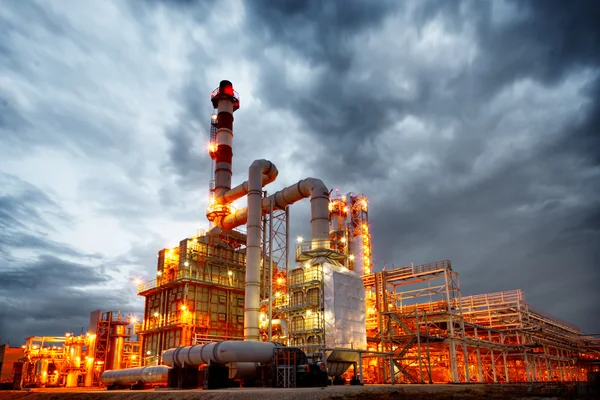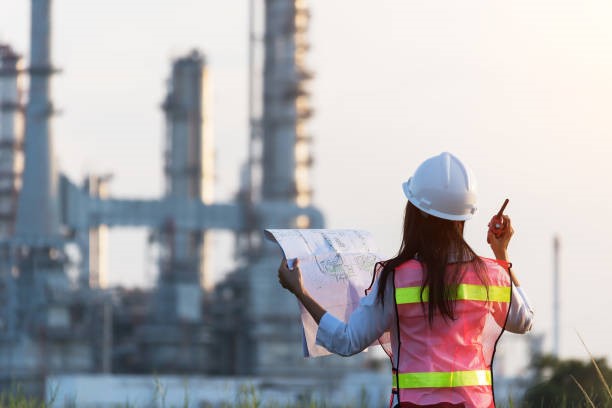
The increasingly widespread adoption of emerging technologies as a product of Industry 4.0 is a testament to its considerable impact on safety within the oil and gas industry.
The growing usage of tech such as video analytics in the oil and gas industry, the INTERNET OF THINGS (IOT), ARTIFICIAL INTELLIGENCE (AI) and so much more are gradually changing the landscape and overall perspective on how safety is approached on a daily basis for workers.
With an emphasis on SAFETY, these tech innovations also help to enhance productivity and output as well as streamline industry processes – increasing oilfield or well yields.
Advancements in tech leading to smarter and more efficient practices also ensure greater WORKPLACE HEALTH AND SAFETY. Emerging tech innovations and trends in the oil and gas industry are seen to be interconnected and working in tandem to create a better workplace environment.
1. Big Data Analytics
Analysts are able to glean a greater understanding of production and performance via big data analytics from the substantial amounts of unstructured data produced in daily operations.
Data from past operations can also be utilised to train and enhance AI models and algorithms. Reduced carbon emissions and operational costs from operating efficiently based on everyday trends are some perks of big data analytics.
2. The Internet of Things (IoT)
Through installed sensors inside wells, blowout preventers and choke valves, IoT is used to ensure the effective functioning of equipment, safeguard safety on site and manage remote areas.
Real-time data can promptly alert field engineers or safety officers on faulty equipment thereby giving them ample time to respond and resolve potentially hazardous issues before they are aggravated. IoT solutions are used to support video analytics in the oil and gas industry through enhanced awareness of equipment serviceability and reduction in maintenance costs.
Predictive analytics aid the IoT to identify potential downtimes and executing timely fixes to limit halts within production systems. With numerous devices and cloud computing network protocols, precise equipment and protocols are necessary to fully utilise the data extracted – IoT as a solution is demonstrated to be applicable to a wide range of industries and use cases.
As a result, carrying out the best practices for safety during IoT deployments is now becoming a crucial prerequisite for industrial environments and infrastructures.
3. Artificial Intelligence (AI)
Insights from AI-driven predictive, prescriptive and cognitive analytics help with efficiency in decision making. Operational problems across the board can be resolved with new discoveries from AI models on site which will invariably aid in improved production methods.
AI algorithms are a robust technology that can analyse and categorise various forms of unstructured data. Predictive AI models can grant companies the ability to forecast and prevent impending safety hazards and events like equipment issues on site. Use cases for AI technology include safety helmet detection on-site and facial recognition to access the said site.
Connectivity and communicative network devices are key to the success of AI models and algorithms for the oil and gas industry. The management of offshore and onshore gas assets is increasingly digitised and automated as safety regulations take precedence.
4. Cloud Computing
Due to the vast amounts of data generated day-to-day by the oil and gas industry, cloud computing provides remote servers to store and process data rather inexpensively.
Using this technology promotes oil and gas efficiency and scalability. The remote access to insights and analytics is enabled in real-time with cloud computing.
However, there are technical limitations, like data security and storage availability for the large data sets created by the industry which is undoubtedly to see large-scale improvements as the industries shift towards cloud computing as a whole.
5. Immersive Technologies
Virtual reality (VR) technologies transmit video and audio information and enable realistic experiences similar to real-world situations.
Augmented reality (AR) technologies, on the other hand, do not create three-dimensional spaces and instead superimpose VR elements onto real-world images.
Mixed reality (MR) technologies incorporate both VR and AR to create a truly immersive space in real-time.
The use of immersive technology like AR, VR and MR can help to reinvent existing processes alongside video analytics in the oil and gas industry and transpose the value chain into digital assets. Real and virtual environments are integrated into devices like wearables and real-time application alerts for events like falls where safety is concerned.
6. 3D Modelling
Much like immersive technologies, 3D modelling can reflect real-world spaces like subsurface reservoirs and represent them with high-quality visualisations.
With historical data, it reproduces a reservoir’s lifecycle which helps to forecast and mitigate risks when safety is concerned. With lowered costs and reduced risk, the benefits of 3D modelling are understated as it improves performance for the oil and gas industry. This technology can provide a view of assets that may not be easily available or understood simply with other forms of data.
Accessibility to real-time data and connectivity is of utmost importance as 3D modelling and visualisation combined with IoT solutions like video analytics in the oil and gas industry would increase its competence. Inefficiencies and dangers on site can be reduced, thus making the site more productive.
7. Manufacturing Execution System
Manufacturing execution systems (MES) are advanced technologies that monitor and record the transition of raw materials to finished goods. To manage the production chain, MES consolidates assembly plants, operational systems such as supervisory control and data acquisition (SCADA) and computing systems.
For the oil and gas industry, MES provides advanced infrastructure for manufacturing systems with integrated control – allowing for oilfield innovations that enable swifter, safer, and more consistent production.
8. Predictive Maintenance
Predictive maintenance is based on data collection from sensors onsite and synthesizing this data with machine learning algorithms.
Safety officers and engineers alike can utilise this to evaluate equipment serviceability and roll out necessary maintenance works. The application of these algorithms in the oil and gas industry could reduce expenses all across the supply chain as these innovations enhance safety on site and the longevity of equipment.
9. Automation and Robotics
Reducing exposure to hazardous events is an effective method for safety in operations. Support from robotics, drones and automation can help to decrease interactions with unsafe environments.
These innovations also promote efficiency and productivity in operations by automating tedious human labour prior to these advancements and reducing human error.
Drones have been increasingly used in industrial operations to mitigate the risk and safeguard the well-being of workers. Now automated drones may be capable of assessing pipelines and large onshore sites even without a human operator throughout the flight.
Replacing the need for humans to inspect, clean or manage more dangerous onsite activities with automated or piloted drones that can do the same is a pivotal step toward safety in the oil and gas industry.
10. Blockchain Technologies
Smart contracts are a secure way of transmitting information within operations. Blockchain technology is progressively prevalent in oil and gas operations as it allows for the verification of employers and workers to maintain security.
Smart contracts on the blockchain also enable automated transactions for efficiency and ease of access for auditing accounts.
How Safety Distills into Greater Efficiency
With all these emerging safety tech innovations, we see that the impact of safety in the industrial sector is severely understated.
The use cases for tech innovations like big data analytics, AI modelling, predictive maintenance and video analytics in the oil and gas industry are interconnected and their effectiveness would be greatly increased if used in tandem. The progressive adoption of these technologies in the oil and gas industry is seen to boost productivity and efficiency in multifaceted ways especially when safety is paramount.
Written by:
Samuel Yeung
Copywriter
